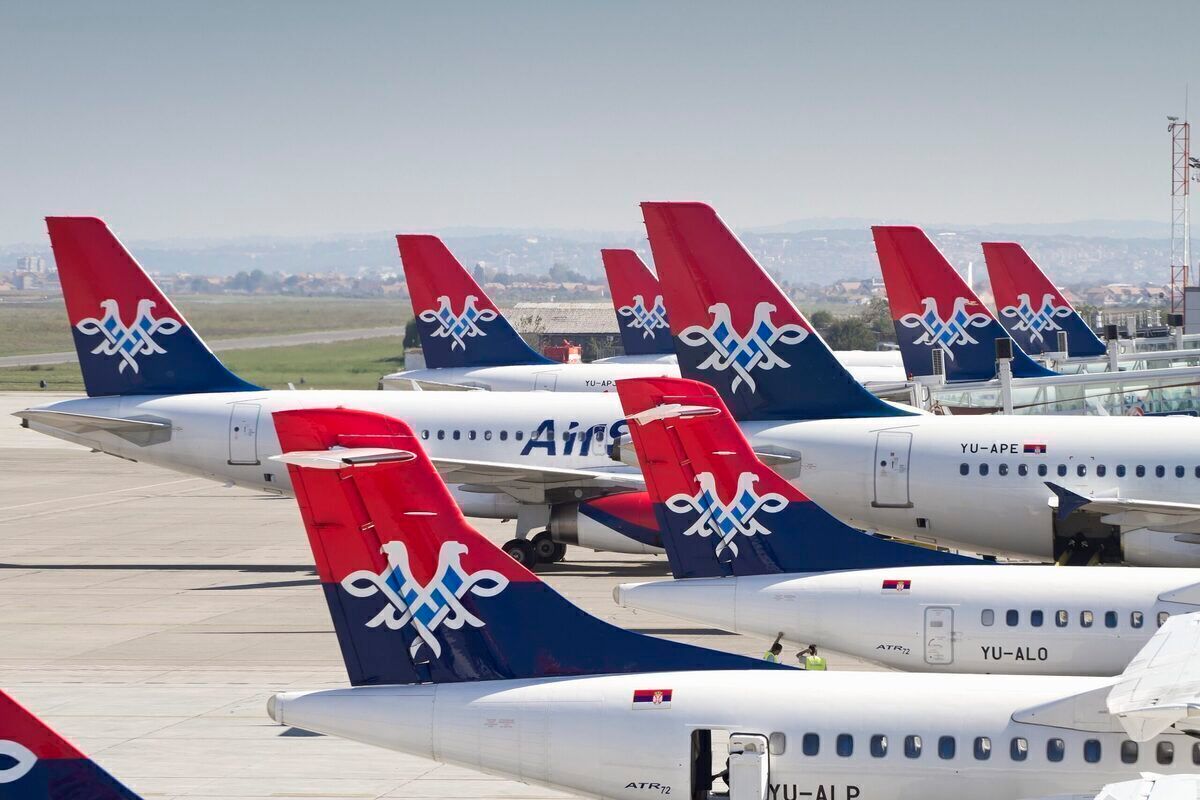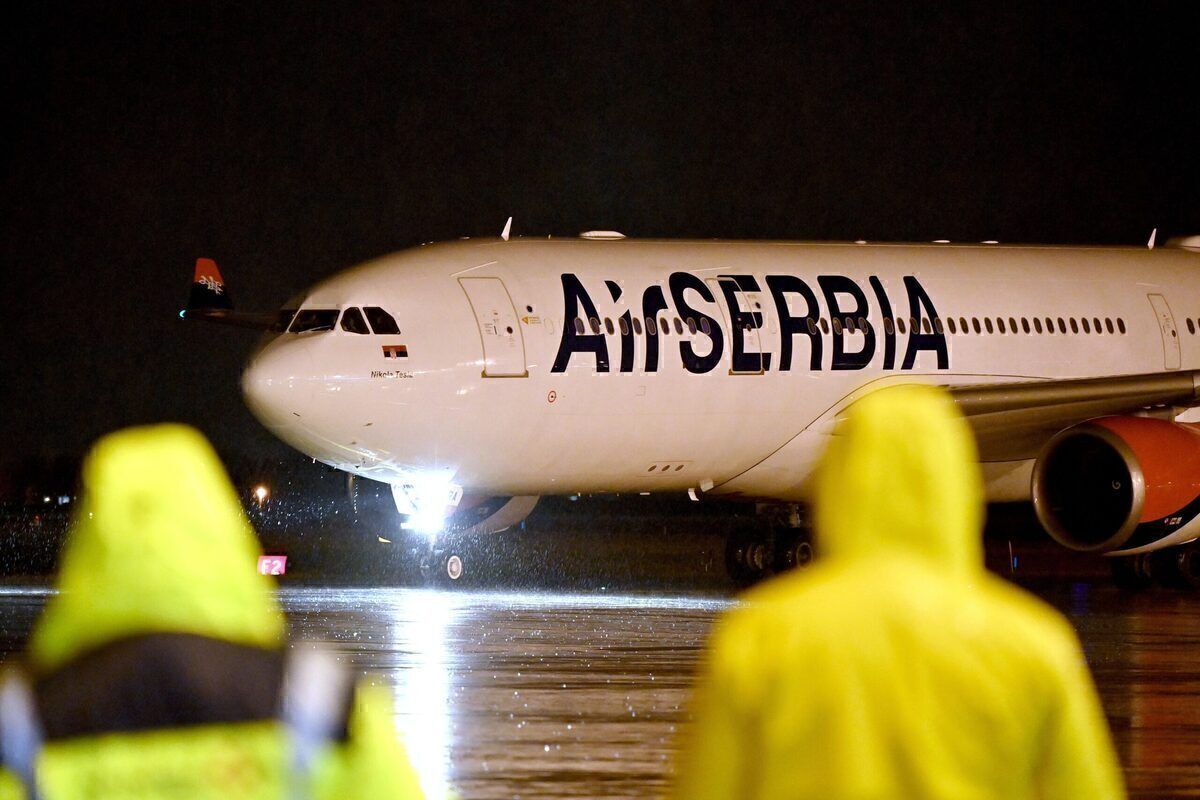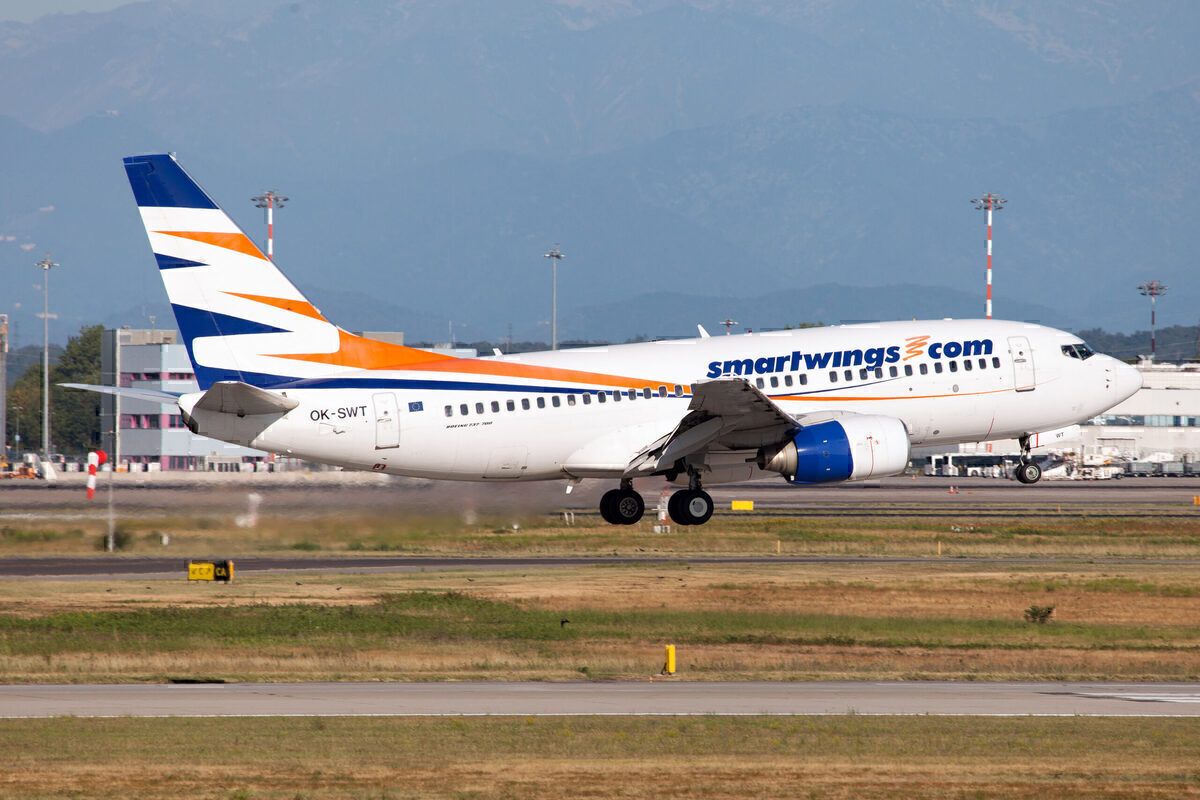Air Serbia is on fire: the national airline and flag carrier of Serbia has exceeded its pre-pandemic passenger traffic figures and it is constantly increasing frequency and capacity across its network. To meet the rising demand, particularly for charters, the airline has leased a Boeing 737-700 aircraft from Smartwings.
Air Serbia marks an excellent June
Air Serbia carried 170,413 passengers last month. This means that June was the busiest month for the Serbian flag carrier since December 2019, before the pandemic broke out. The figure for June 2021 is also impressive because it represents an increase of 68% compared to May 2021.
Air Serbia now handles well over half of all passengers at Belgrade Nikola Tesla Airport. The figure stood at 54.1% in June and 52% for Q2 of 2021. This is 9% higher than Q2 of 2019.
The airline's network in June consisted of 38 international destinations, with the most popular airports being Tivat (TIV) in Montenegro and Podgorica (TGD) in Montenegro, followed by Paris, Moscow, Zurich, and New York.
Commenting on the airline's impressive June results, Jiri Marek, Air Serbia's General Manager Commercial and Strategy, stated:
“The results we accomplished in June are a product of strategic planning, efficient recognition of business opportunities, and a quick reaction to changes within the market. We are pleased the situation is slowly heading towards a positive direction and the demand for air transport is constantly increasing. As a regional leader, we remain committed to intensifying the volume of air traffic wherever we can, in order to continue to provide strong connections between cities in the region, in Europe, as well as the entire world.”
Stay informed: Sign up for our daily and weekly aviation news digests.
New routes and more frequencies
Air Serbia is currently expanding into new markets and is fostering an incredibly strong transfer strategy that sees the airline grow its passenger numbers by offering affordable and frequent transfer options in its hub in Belgrade.
As an example of this strategy, last week Air Serbia expanded its partnership with Turkish Airlines significantly. Up until July this year, Turkish Airlines and Air Serbia codeshared on just a handful of routes, including on each other's Belgrade-Istanbul flights. The new codeshare partnership is far stronger, with Air Serbia gaining access to five international and 11 domestic Turkish Airlines routes.
At the start of July, Air Serbia entered into a Special Prorate Agreement with Luxair, the flag carrier of Luxembourg, enabling passengers flying on Luxair's Luxembourg-Belgrade flights to connect onward to three regional Air Serbia routes.
At the same time, Air Serbia launched a new route last week, Kraljevo (KVO) to Thessaloniki (SKG), and another one from Belgrade to Geneva (GVA) in March. This follows the launch of Belgrade to Rostov-on-Don (ROV) in June and Belgrade to Oslo (OSL) last July. This means that the airline has launched four brand new routes during the pandemic.
To meet the rising demand, in particular for charters to Turkey, Greece, and Egypt, Air Serbia has leased a Smartwings Boeing 737-700, registered OK-SWT, which operates rotations every day out of Belgrade Airport. Most rotations are charter flights, but some are also scheduled services: today, the aircraft flew to Milan Malpensa and back.
Air Serbia has retired its entire Boeing 737 fleet, which it previously used for charters. Presumably, the airline did not anticipate that demand for travel would rebound so quickly, so it also did not extend the lease on one A320 and one A319.
What do you think of the news that Air Serbia is growing so rapidly and expanding so boldly at the moment? Let us know what you think of this story in the comments below.



